A masterful and comprehensive approach to leading and managing transformation efforts of any type or size.
Phil Lenir , Co-founder and President, CoachingOurselves
Bev has created a framework that will revolutionize the way you as a leader create alignment, engage others, manage resistance, and implement the culture shifts you need for systemic change.
Jean West , Director of Mental Health, York Support Services Network; and Professional Certified Coach
I encourage anyone who wants to effect positive change to read this bookand reference it time and time again as you use Bevs process and tools.
Paul Slaggert , retired Director, Stayer Center for Executive Education, University of Notre Dame
Compelling and powerful! This is not just a good read, but a challenge to shift our notions of what it means to bring meaningful change in a digital world where new trends are reshaping our workplaces, society, and the very cultures we live in.
Dr. Raye Kass , Professor of Applied Human Sciences, Concordia University
Part 1: The Leading Meaningful Change Journey
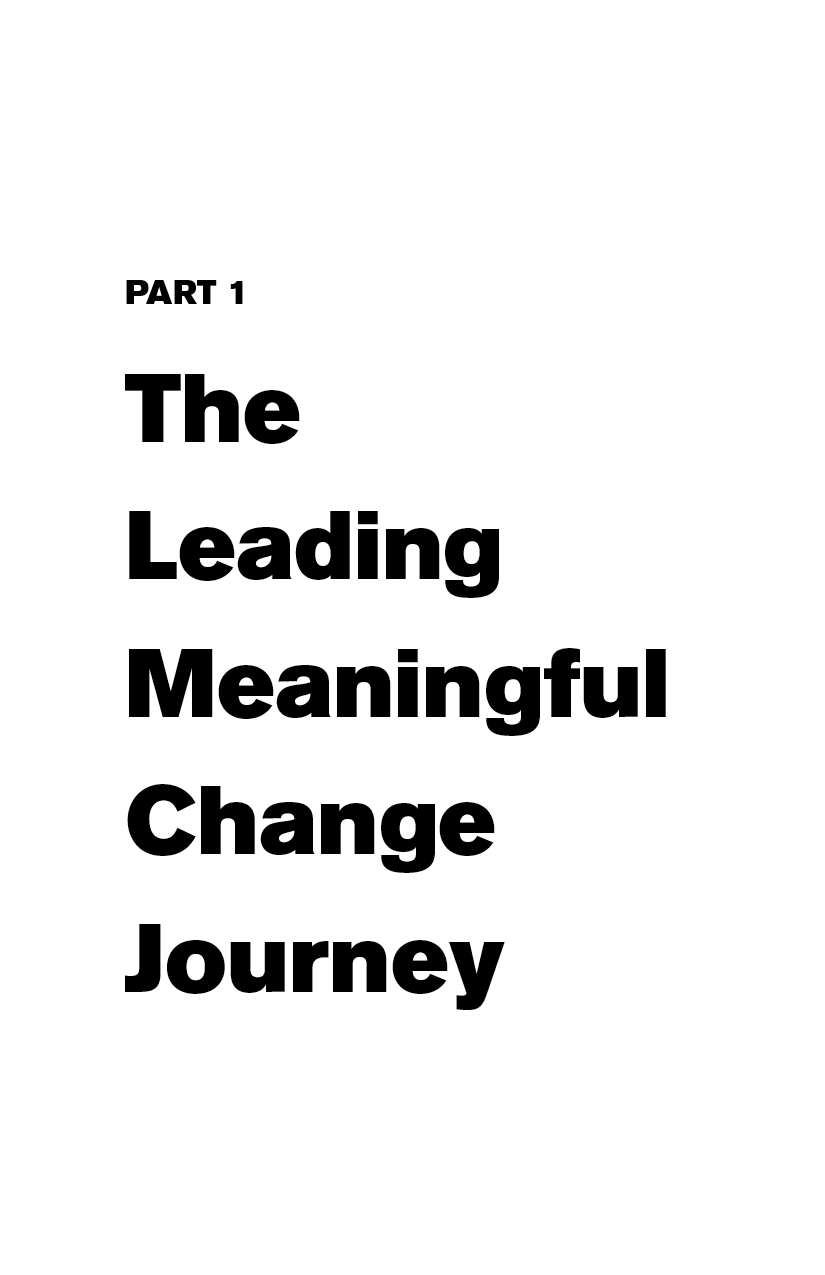
Chapter 1

The Main Character in Leading Meaningful Change Is
You: Use-of-Self in the Change Process
In the late 1990s, coaching was just starting to surface as a support for leadership development, and in some cases was even formalized inside organizations. Working with my mentor and colleague Edith Whitfield Seashore, we developed a coaching model we called Triple Impact Coaching ( TIC ) and spelled it out in our book Triple Impact Coaching: Use-of-Self in the Coaching Process (2006). Our model was originally designed for a specific group of research and development managers who were leading the integration of two teamsproduct support and new product introductioninto one. Our TIC model was successful and has since been adapted and used globally with leaders and managers in all types and sizes of businesses and industries in the public, private, and plural sectors (the last comprising our communities, charities, not-for-profits, clubs, etc.).
At the core of the TIC model is the concept called Use-of-Self. This concept continues to sit at the core of the new LMC Framework that this book presents. It forms the foundation for the seven guiding principles of the LMC Framework that you will learn about in chapter 3. You may be familiar with it already from prior workshops you have taken or articles you have reador it may be brand new to you. Whatever your background with it, it is worthwhile reading this chapter closely, as the Use-of-Self model I present here has evolved since the publication of our book and has been enhanced with research and examples that reflect the current trends and challenges we face in our workplaces and our world.
The Roots of Use-of-Self
My introduction to Use-of-Self goes back to the work and teachings of two luminaries in the field of organizational development, the late Dr. Charles Seashore and his wife, Edith Whitfield Seashore (Charlie and Edie, as they liked to be called). I met Charlie in 1995 when he taught in the Master of Applied Social Science program (now called Applied Human Sciences) at Concordia University in Montreal, Quebec, Canada. At the time, this was a new Master of Arts program in organizational development, modeled after American Universitys Master of Science in Organizational Development, where both Charlie and Edie also taught.
I was a student in the first graduating cohort. In that program, we were provided with a unique opportunity to select one elective course for our second year. One day over lunch, Charlie talked about Edies course, Use-of-Self as Instrument, which sounded interesting, so I chose it as my elective. This course changed my life, as it did for many others in our class. Edie and I connected right away and developed a relationship that flourished. She became not just my teacher but my mentor, coach, business partner, and close friend.
In 2000, Edie agreed to work with one of my client organizations, where I had been hired to deliver a coaching program to develop leaders and teams to lead and manage change. When we got together to do the teaching handover, I presented Edie with a binder of materials I had created for this client. She read them over and encouraged me to write a book about the TIC concept and the Use-of-Self. I agreed, but only on the condition that we author it together. This was the start of a mutually rewarding and long friendship that lasted until her death in 2013. In addition to teaching together at McGill University and working with our clients in Canada, we published our book, which continues to influence many coaching programs throughout the world and is the foundation for my coaching and organizational development practice and research today.
What exactly is Use-of-Self? What did the Seashores mean by it? In a special edition of the Organizational Development Journal, their daughters, Becky May and Kim Seashore, wrote:
Our parents exemplified the integration of Use-of-Self beyond the buzzword, beyond a concept that needed to be isolated or highlighted, beyond a tool exclusively of or for the trade of ( OD ). One of our mothers favorite sayings was: A master in the art of living draws no sharp distinction between his work and his play, his labor and his leisure, his mind and his body, his education and his recreation. He hardly knows which is which. He simply pursues his vision of excellence through whatever he is doing and leaves others to determine whether he is working or playing. To himself he always seems to be doing both. Enough for him that he does it well.
Edie and Charlie lived this motto and philosophy of the integrated self. They may not have created the phrase or concept Use-of-Self, but they now have a legacy that lives on.
Another passage that Charlie wrote in the foreword of Triple Impact Coaching sums up superbly the meaning of Use-of-Self:
The focus of Triple Impact Coaching is
Use-of-Self. It is simple, profound and infinitely complexall at the same time. We know the value of instruments and tools of the trade in all of our various professions. We also know that there is a temptation to attribute the success of our work to the technical tools or strategies that we use and the accompanying belief that all we need to do to increase our range of effectiveness is to acquire more of these tools.The simple theme to pay the most attention to is the person using the tools, meaning oneself, rather than focusing on the design of the tool. An excellent tool in the hands of a struggling professional can do great damage while an imperfect tool in the hands of a true craftsperson can morph into an awesome impact at individual, team and organizational levels.
Charlie elaborated on the deeper philosophy and psychology embedded in Use-of-Self as a core leadership tool in an article he later published with colleagues, entitled Doing Good by Knowing Who You Are: The Instrumental Self as an Agent of Change:
Use-of-Self is a link between our personal potential and the world of change. It starts with our understanding of who we are, our conscious perception of our Self, commonly called the ego, and the unconscious or out of awareness part of our Self that is always along for the ride, and on many occasions is actually the driver. This understanding of Self is then linked with our perceptions of what is needed in the world around us and our choice of a strategy, and a role in which to use our energy to create change. Our focus here is on the potential for changing ones own worldthe world as we perceive it, and to act on it and leave our mark and legacy for others to appreciate.
Next page
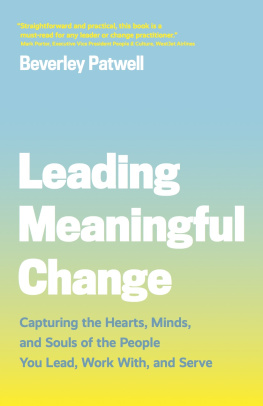
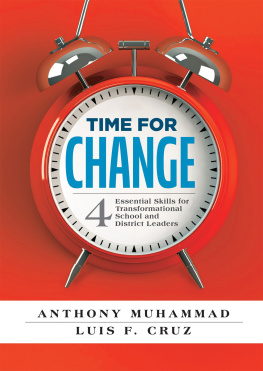
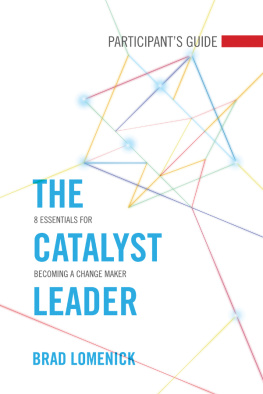
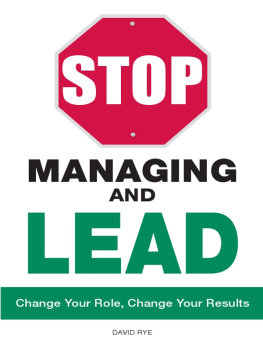
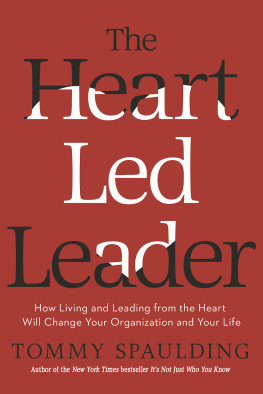

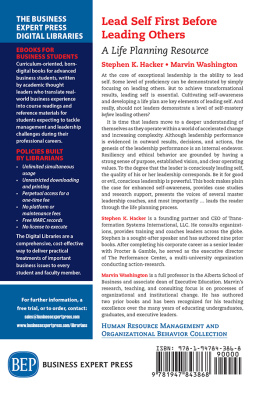
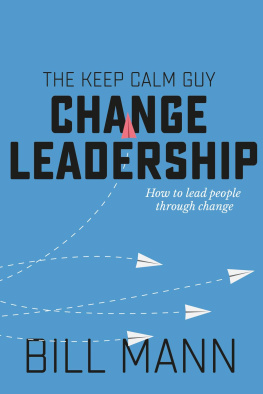
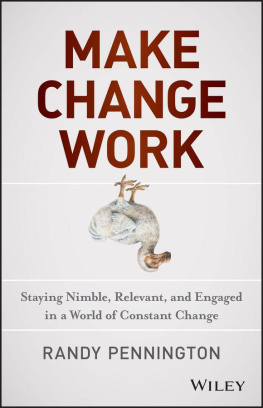
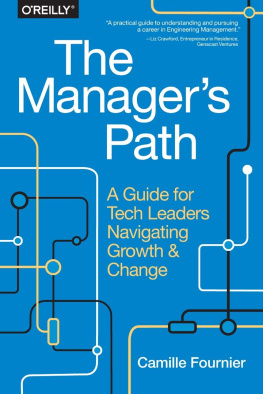
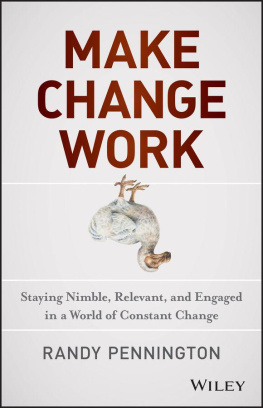

 The Main Character in Leading Meaningful Change Is You: Use-of-Self in the Change Process
The Main Character in Leading Meaningful Change Is You: Use-of-Self in the Change Process